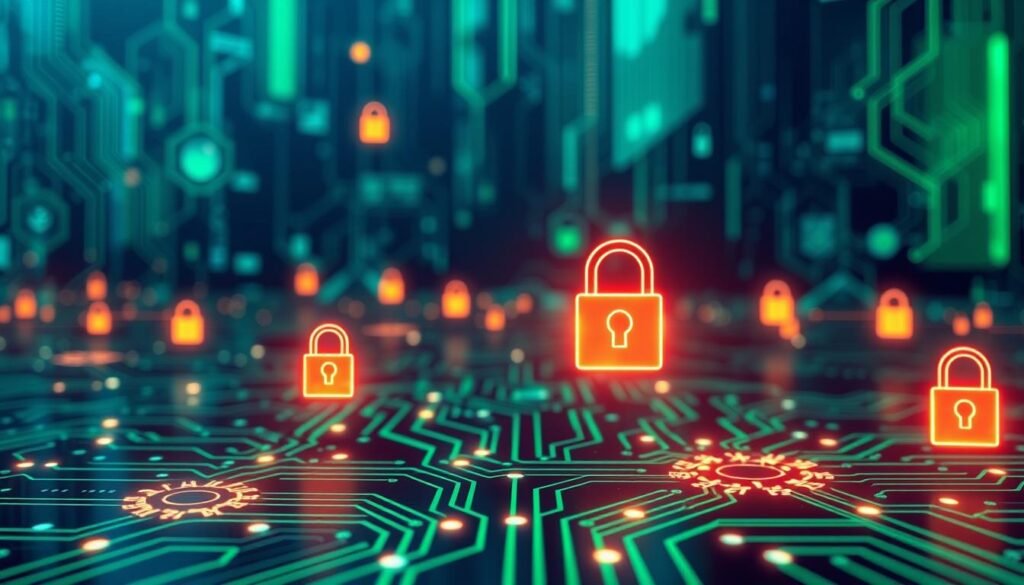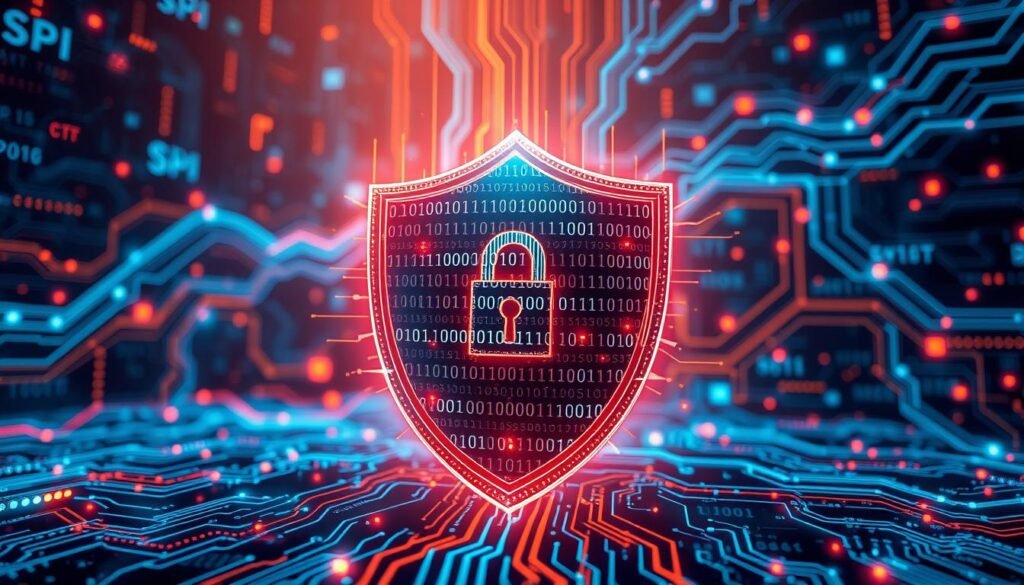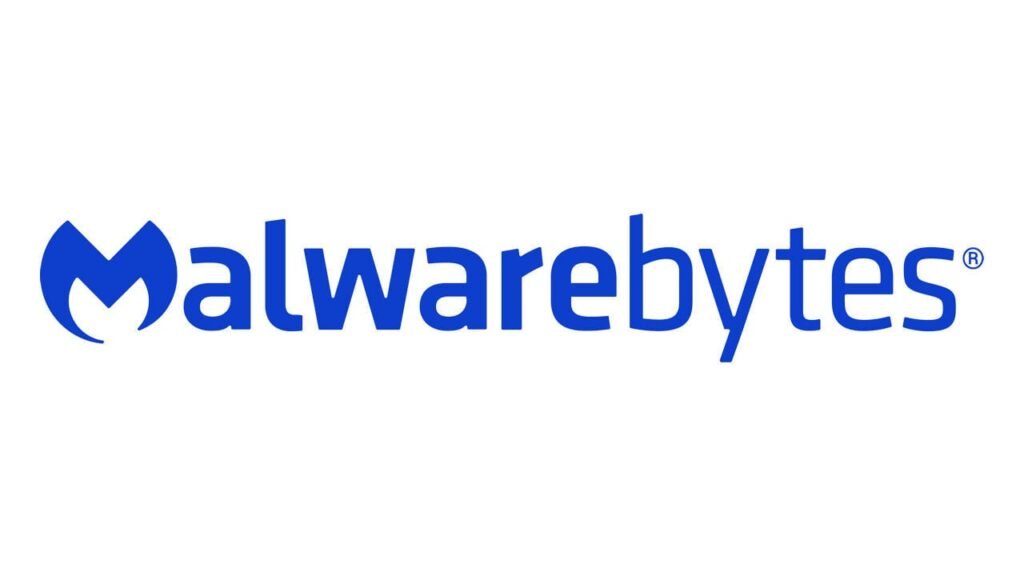Did you know that IT security teams have seen a big jump in AI cyber threats lately? This is a big problem for companies all over the world1. As AI gets better, so do the tricks of bad guys using it for evil. The National Cyber Security Centre (NCSC) says cyber attacks will get worse in the next two years. They will use AI to find targets and trick people easier1.
This shows how important it is to know how AI can be used for good and bad. It's up to you to keep your data safe.
By 2025, AI will be easier for more people to use, which is a big risk1. AI-powered malware and phishing, like what OpenAI's GPT-3 can do, will become more common. This makes keeping your data safe even more critical. Companies need to be ahead of these threats by using advanced AI tools.
Cyber attacks are getting more complex, so you must improve your security. In this article, we'll look at AI cyber attacks and how to protect yourself.
Key Takeaways
- • AI-driven cyber attacks are on the rise, with IT teams struggling to keep pace.
- • Predictions suggest that the impact of these attacks will intensify over the next two years.
- • The accessibility of AI tools for cybercriminals is expected to grow, increasing potential threats.
- • Integrating AI into your cybersecurity strategy can bolster data protection.
- • Staying informed about emerging threats is crucial for organizational resilience.
The Growing Threat of AI-Driven Cyber Attacks
The world of cybersecurity is changing fast, with AI threats on the rise. AI helps hackers automate attacks like scanning for weaknesses and phishing. This lets them hit many companies at once2. There's been a huge jump in AI-powered social engineering scams, showing how effective these attacks are3.
AI lets attackers quickly use stolen data, making them a bigger threat3. This makes it harder for companies to keep their data safe.
AI attacks can change their plans quickly to get past security2. They make phishing emails look more real, making them tough to spot2. This makes it hard for companies to protect their data from these advanced attacks.
The cost of a data breach in the U.S. was about $9.44 million in 20224. This has led 82% of IT leaders to plan to spend on AI for security by 20234. As threats grow, using AI is key for companies to keep their digital world safe.
Understanding AI Cyber Threats
AI cyber threats include many harmful activities that use advanced tech to find weaknesses. Hackers use AI tools like FraudGPT and WormGPT for complex attacks. These attacks are hard to spot and stop because they are very specific5.
These threats include automated phishing, where emails are made in seconds. They also include machine learning attacks that change to avoid old defenses6. The quick growth of these attacks makes them a big problem for security teams.
As more businesses use digital tools, the danger of AI cyber threats grows. These attacks can hit important systems, mess up whole economies, and steal private data5. It's urgent to find good ways to fight these threats, as old security methods can't keep up with AI attacks.
To fight these threats well, companies need to use AI for security. This can help watch for strange actions that might mean trouble6. Doing regular security checks, like trying to hack into systems, can find problems early. This way, companies can act fast to protect themselves. Keeping up with new threats is key to winning the fight against AI cyber threats.
Machine Learning Attacks: The New Norm
Machine learning attacks are changing the world of cybersecurity. They give attackers new tools to make their attacks more efficient and wide-ranging. With AI, even those not very tech-savvy can launch successful attacks on companies. In fact, 77% of hackers now use AI in their attacks, showing a big change in their methods7.
These attacks are powerful because AI can deeply analyze their targets. AI helps hackers quickly find victims on social media, making phishing attacks faster and more common8. Sadly, 45% of companies have seen more phishing attacks because of AI7.
What's striking about these attacks is how they can change quickly. AI can create fake messages in many languages, making phishing more successful8. Also, AI helps find weaknesses in systems, making it hard for old security methods to keep up. This can lead to big problems for companies.
Ransomware attacks are getting smarter, posing big challenges for businesses. AI helps start these attacks and pushes companies to get better security. So, it's crucial for companies to use AI to fight this new threat7.
How Deepfakes Are Changing Cybersecurity
Deepfakes are a big problem in today's cybersecurity world. These fake digital videos are made with AI and are getting better fast. They are a big threat to our trust online9. Cybercriminals use them to trick people, making old ways of protecting us less useful. For example, a fake video of a CEO caused big problems for a company9.
Deepfakes are making cybersecurity harder. They are used for scams, especially against top people10. Scammers spend a lot of money on these fake videos, up to $20,000 a minute for the best ones10.
Companies could lose a lot of money because of deepfakes. For example, Hong Kong Bank lost $25 million to a scam10. These attacks are getting better, using AI to make fake emails and bots to steal info9.
Your company needs to use new AI tools to fight these threats. It's cheaper to prevent deepfake attacks than to deal with the damage10. Leaders should also train employees well and have strict rules to protect against deepfakes.

| Deepfake Threats | Consequences | Recommended Actions |
|---|---|---|
| Impersonation of executives | Reputational damage and financial loss | Implement multi-factor authentication |
| Expensive deepfake technology | High investment by cybercriminals | Invest in AI-based detection systems |
| Targeting for extortion | Increased pressure on executives | Enhance security awareness training |
| Utilization of LLMs in attacks | Creation of convincing phishing schemes | Adopt continuous verification protocols |
Adversarial AI: A Rising Concern
Adversarial AI is a big cybersecurity risk because it tricks machine learning systems. Hackers use manipulated data to make these systems make wrong choices. This can lead to security problems. With millions of new malware types every day, fighting these threats is getting harder11.
This issue affects many areas, like fraud detection and image recognition. It makes people worry more about adversarial AI in cybersecurity.
Adversarial AI attacks have different steps. First, they understand the system. Then, they make special inputs to attack it. After that, they carry out the attack and might do more after12.
These attacks can be simple or complex. Some attacks know everything about the AI, while others don't know much12. A scary fact is that 97% of cybersecurity experts fear their companies will be hit by these threats13.
As threats grow, so do the number of incidents. For example, 61% of companies saw more deepfakes in the past year13. To fight this, 31% of companies want to improve their EDR solutions13. They're trying to build strong defenses against these new dangers.
AI-Driven Cyber Attacks: How to Stay Protected
Defending against AI-driven cyber attacks needs a strong foundation of proactive cybersecurity. Organizations must understand the growing threat of these attacks. Hackers use AI for complex attacks like phishing and malware, making it crucial to stay alert14.
Proactive Cybersecurity Measures
To protect yourself, start by building a security-aware culture. Training employees is key; they often spot threats early14. Having clear cybersecurity policies helps keep everyone secure.
Integrating AI for Defense
Using AI security solutions can boost your defense. AI tools like email security spot phishing attempts. User and Entity Behavior Analytics (UEBA) helps catch threats in real-time15. AI also helps improve zero trust frameworks, making your network safer by learning from it15.
| Proactive Measures | Benefits |
|---|---|
| Regular Employee Training | Enhances awareness, reduces risk of insider threats |
| AI-Powered Security Tools | Improves detection accuracy, automates response |
| Zero Trust Implementation | Reduces attack surface, enhances verification strength |
| Incident Response Planning | Facilitates quick action during breaches, minimizes damage |
A layered security approach with AI tools and training can fight off cyber threats. This way, you can keep your data safe from advanced attacks16.
Autonomous Malware: Evolving Threats
Autonomous malware is a big problem in cybersecurity. It uses artificial intelligence to change and grow, making it very dangerous. This technology can weaken defenses, leading to more cybersecurity threats globally. It's important to know what this malware looks like and how it affects us.
Characteristics of Autonomous Malware
Autonomous malware can change and avoid old security tricks. It makes many versions of itself, making it hard for experts to catch. AI malware learns from its surroundings, getting better at attacking us.
It can even pretend to be other hackers, making attacks more successful17.
These threats are hard to spot because they change often, unlike old malware18.
Real-World Examples of Autonomous Malware
There are many examples of autonomous malware, like smart phishing and changing ransomware. AI helps these malware send fake emails that look real17. The dark web is also a place where new AI malware is made, like FraudGPT and WormGPT18.
These tools make cybercrime easier and bring new threats. Companies need to stay ahead of these changes to protect themselves.
AI Security Countermeasures
As AI-driven cyber attacks grow, it's key to have strong AI security countermeasures in place. Advanced machine learning can automate detection and prevention. This boosts your cybersecurity defenses a lot. For example, Precision AI by Palo Alto Networks is a top AI system for these tasks19.
Cybercriminals use easy-to-get AI tools like CobaltStrike for attacks. Knowing these tools helps you set up strong threat mitigation plans19. Working together with others helps share threat info, making your defense stronger.
Investing in AI-powered cybersecurity is smart. These tools make security work easier and faster19. AI use in cybersecurity defenses is set to jump by 37.3% from 2023 to 203020.
It's important to keep up with AI in cyber attacks. Staying alert helps spot new threats with AI-powered tools19. Using behavioral analytics helps find odd network activity fast, boosting security.

Teaching staff about AI scams and fake images is essential. Scammers often use social media to promote their schemes20. A mix of AI and human checks keeps your security strong21.
Implementing Proactive Cybersecurity
In today's digital world, it's key to have proactive cybersecurity. This means always checking for threats and updating security as needed. It's a way to keep your defenses strong by always looking for risks and acting fast.
Continuous Threat Exposure Management (CTEM)
CTEM helps businesses stay one step ahead of threats. With AI in cybersecurity, we can spot threats faster and better. For example, using AI, companies can cut down response times and find threats quicker.
Many companies are now using AI to fight cyber threats. In fact, 76% of them are putting more money into AI and machine learning for security22. And, 44% of global organizations use AI to find security breaches22.
Utilizing AI for Threat Detection
AI helps a lot in finding and stopping threats. It can look at huge amounts of data to find security problems. The market for AI in cybersecurity is expected to grow to $24.8 billion by 202422.
AI systems are much better at security than old systems. They can catch threats 80% to 92% of the time22.
For example, Best Buy improved its phishing detection to 96%23. AI keeps getting better, helping companies stay ahead of threats. By following best practices and keeping up with training, companies can protect themselves better against AI attacks inline protection strategies24.
Ethical AI Guidelines for Cybersecurity
As companies use AI in cybersecurity, they must follow ethical AI guidelines. These rules help ensure AI is used responsibly and protects data privacy.
AI tools can quickly analyze large amounts of data, spotting threats humans might miss. This makes them great for finding and fixing cyber issues fast25. But, the fast growth of AI also lets bad actors create complex phishing scams. So, strict ethical AI rules are needed to stop these wrong uses26.
It's important for companies to be open about how they use data. Getting users' consent helps build trust and follows ethical standards25. Also, it's key to protect personal info, like financial and health data, from being caught by AI security tools26.
To build trust, policies should aim to reduce AI biases. Keeping training data clean and accurate is crucial for AI to fight cyber threats well25. Regular updates and checks on AI systems help them stay effective and ethical.

It's also important to involve humans in AI development. This makes sure AI is used responsibly and fairly. By training security pros, companies can use AI in a way that complements human skills26.
| Key Ethical Guidelines | Description |
|---|---|
| Transparency | Organizations should be clear about how data is collected, used, and safeguarded. |
| Accountability | Maintaining human oversight in AI systems to ensure responsible actions are taken. |
| Data Privacy | Ensuring user data is protected and used with consent to uphold privacy rights. |
| Bias Mitigation | Auditing AI algorithms for biases to promote fairness and objectivity. |
| Continuous Improvement | Regularly updating AI tools and training data to respond to new threats effectively. |
Conclusion
The rise of AI-driven cyber attacks shows we need better data protection. It's key for companies to know the threats and tools to fight them. With cybercriminals using advanced tech, like machine learning, we must act fast to protect our data and keep businesses running2728.
Using top-notch security tools, like Barracuda Essentials, can help a lot27. Teaching employees and using AI can keep you safe from cyber threats. Also, using AI ethically makes your defenses stronger28.
As cybersecurity changes, staying alert and proactive is crucial. By being vigilant and using the latest AI, you can fight off cyber threats. This way, you can keep your digital world safe for a long time29.




